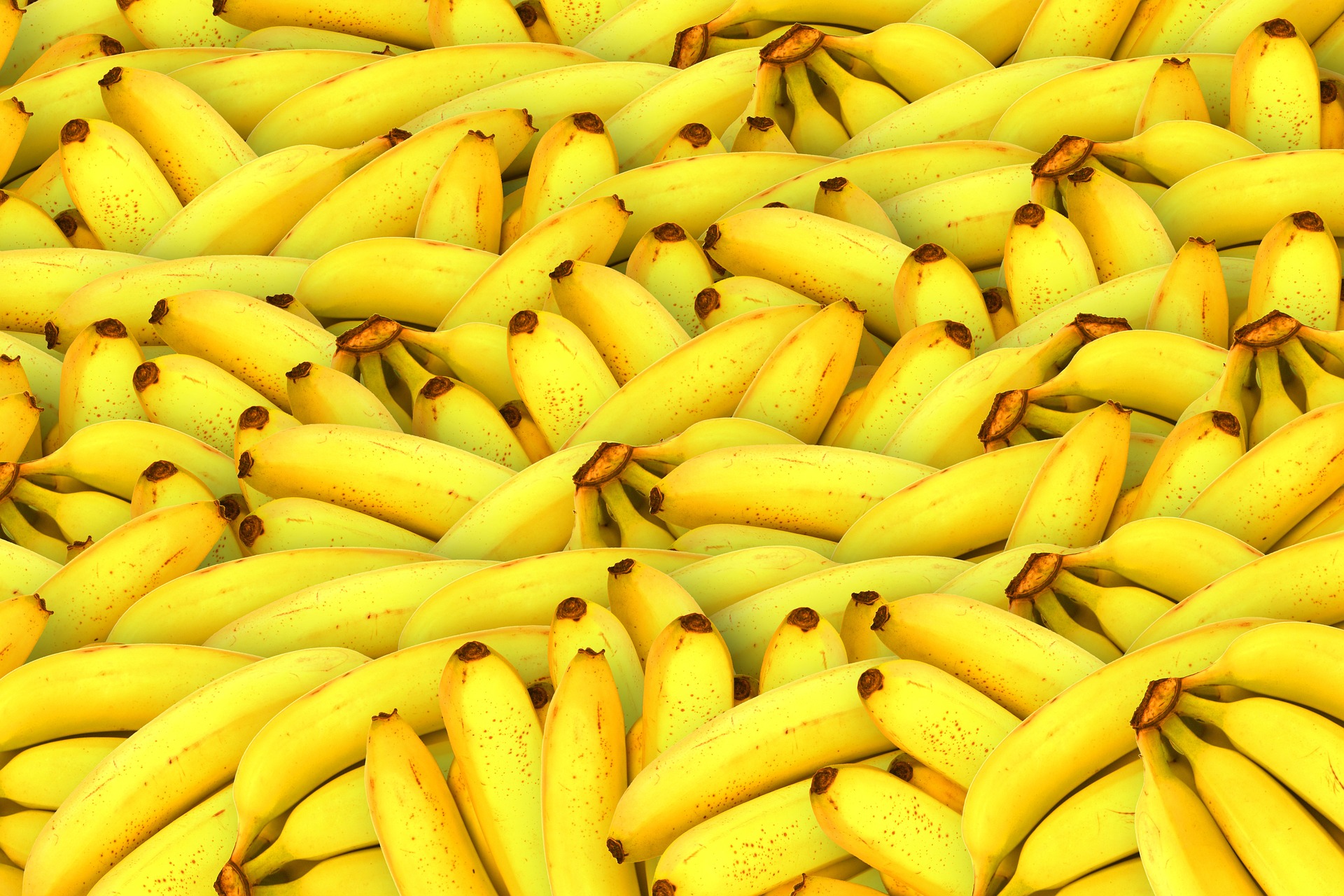Your local grocery store is a wealth of logistics activities. Have you ever looked at the banana you are eating for lunch and wondered where it’s been? Do you care? The process of getting that banana from producer to consumer is an interesting exercise in logistics and transportation. The average banana travels about 4,000 miles before being pulled out of your blue & white metal “Logistics Superhero” lunchbox (with ubiquitous matching Thermos bottle).
Bananas already come in a protective “container”, but bananas are delicate and special handing is provided from plantation to consumer. The banana “bunch” is hand picked off the stalk and taken by tractor/cart to a sorting & packaging warehouse. Bunches are reduced to “hands” and packed in boxes. These boxes are then placed in refrigerated shipping containers for the trip to the market. The containers are trucked to a port of entry where they are loaded onto special container ships known informally as banana boats. These ships have the capability to power the refrigerated containers during the voyage and are designed with a higher speed capability to move the bananas quickly to their destination before they spoil – especially to Canada and Europe.
Upon arrival at the destination port, the containers are unloaded from ships onto train cars and truck trailer chasses, then delivered to a grocer’s distribution warehouse. The bananas are partially ripened by exposing them to ethylene or acetylene gas. Then the bananas are loaded onto Less-Than-Truck Load (LTL) trucks and sent with other produce to local retail stores. Customers will purchase the banana hands, break apart into individual “fingers”, and either eat raw or use as a cooking ingredient. The total time from picking to purchase is within an 18-22 day window. Then consumption usually must occur within another 3-4 days (longer if cooked) before the banana over-ripens (starches convert to sugars).
Compared to apples, bananas have 2x carbohydrates, 3x phosphorus, 4x protein, 5x vitamin A & iron, and 2x other vitamins/minerals. It gives an instant, sustained and substantial boost of energy (contains sucrose, fructose and glucose), is heart healthy, low calorie, good for depression and PMS, plugs you up or clears you out [depending on the need], and fighter pilots swear they taste as good coming up as they do going down. Ok, TMI. But it just goes to show that bananas are an important commodity that benefits from the wonderful world of global logistics. – Logistics in Action
……………………………………………………
My father, as a teenager in the 1920s, was a crew member of a banana boat. As I understand it, bunches were picked very green and were loaded as bunches by hand and hung in the boat. This was not without risk as often bunches were inhabited by tarantulas. No refrigeration, no special containers, the boat went to a US port (I think New Orleans) and then the bananas went to by train to the rest of the US. Timing was just as critical as it is today. Crude system compared to today, but it somehow worked. He even witnessed a revolution during a visit to one of the banana countries. – Bob Goodwin
……………………………………………………
I worked college summers at the Pacific Fruit and Produce Company warehouse in Rapid City, SD. The bananas would arrive via rail car to be unloaded and taken to the special locker where the gas would be released for ripening and subsequent transportation to the retail grocer. To unload, first a looped rope was tied around an upper “hand” of bananas. When reaching in to secure the rope loop one never knew what might be within the banana stalk. I have pulled out many a tarantula and every variety of snake found in Nicaragua. Since the rail car was gassed, these creatures, although alive, were pretty drowsy and were put into containers provided by the renown Reptile Gardens of the Black Hills which paid Pacific Fruit for the exotic critters.
Then we had a special dolly with two hooks onto which two looped stalks of bananas were placed, taken to the locker where knotted ropes hung from the ceiling. The stalks were taken off the dollies and the looped ropes around the stalks were then placed over the knotted ropes hanging from the ceiling where they remained until ripened by the gas. Then we would go into the locker and cut hands from the stalks and place them into boxes for transport to the grocer. Bananas are labor intensive.
The only thing worse in a produce warehouse is watermelons that must be unloaded one at a time. And there are always several rotten ones where you reach in to lift one and they fall apart in an especially disgusting and smelly ooze that stays with you the rest of the day. But the pay was good. Union wages (Teamsters). My college friends were getting supposedly great white collar internships that had prestige and no money. I made enough in summer pay to pay all my college expenses and money to spare. I can eat neither bananas nor watermelons to this day. – Tom Kuypers
……………………………………………………
My co-workers have challenged me to develop a support plan for a banana. If this exercise also tickles your funny bone, send me any ideas you have and we will compile them in a future SOLEtter.
VIDEOS:
Remember the rope-way article in the February 2016 (V3N3) SOLEtter? Watch how bananas are transported from the fields to the processing plant. Dole has over 80 MILES of these!
Banana Supply Chain [5:08]: https://www.youtube.com/watch?
The Journey of bananas [4:33]: https://www.youtube.com/watch?
One of the best things about bananas can be learned from monkeys [0:39]: https://www.youtube.com/watch?
